Your Baby's Developmental Milestone at 5 Months

The journey of parenthood is one of constant wonder, a daily unfolding of new discoveries, both for your baby and for you. As your baby reaches the significant five-month mark, you are likely witnessing a truly remarkable blossoming of their abilities, awareness, and that unique little personality that is starting to shine ever more brightly.
Quick Guide - What Your Baby Might Be Doing at 5 Months
While every baby develops at their own unique pace, here’s a quick summary of what most children at or before 5 months typically be starting to do or be working on around the five-month mark. Remember these are general guidelines, and variations are perfectly normal.
| Developmental Area | Typical Milestones Reached in a 5 Month Old Baby |
| Gross Motor Skills | • Hold their head steady without support when sitting (with help). • Push up on their arms when lying on their tummy, lifting their head and chest. • Roll over from their tummy to their back. • Bear some weight on their legs when held in a standing position and may enjoy bouncing. |
| Fine Motor Skills | • Reach out for toys purposefully with one or both hands. • Grasp objects, like a rattle, and bring them to their mouth. • Explore objects by shaking or looking closely at them. • May start to pass objects from one hand to the other. |
| Sensory Development | • Follow moving objects with their eyes and track people across a room. • Show interest in patterns and bright colours. • Turn their head towards the source of sounds and familiar voices. • Enjoy exploring different textures with their hands and mouth. |
| Communication & Language | • Make a variety of sounds, including cooing, gurgling, squealing, and babbling (e.g., "ah-goo," "ba-ba"). • Respond to your voice and may pause their own sounds to listen when you speak. • Begin to understand the turn-taking rhythm of conversation. • May make sounds like blowing raspberries. |
| Social & Emotional Development | • Smile readily and spontaneously, especially at familiar people. • Clearly recognise primary caregivers and may show preference for them. • Enjoy social interaction and games like peek-a-boo. • Show a wider range of facial expressions to convey emotions. |
Understanding the typical developmental milestone 5 months pathway is not about ticking boxes on a checklist, but rather about gaining insight and reassurance, empowering you to support your baby’s incredible growth trajectory. It’s a time of profound connection and joy, watching them master new skills and engage with the world in increasingly complex ways.
Always remember that every baby is an individual, a unique being charting their own course. While we discuss general patterns and timelines, each child's development progresses at its own inherent pace, influenced by a myriad of factors from genetics to their immediate environment. Therefore, not all babies will reach every developmental milestone at the exact same time, and this variation is perfectly normal and expected.
This guide aims to be a comprehensive companion through this exciting stage, offering detailed insights and linking you to authoritative resources.
General Child Development at Five Months
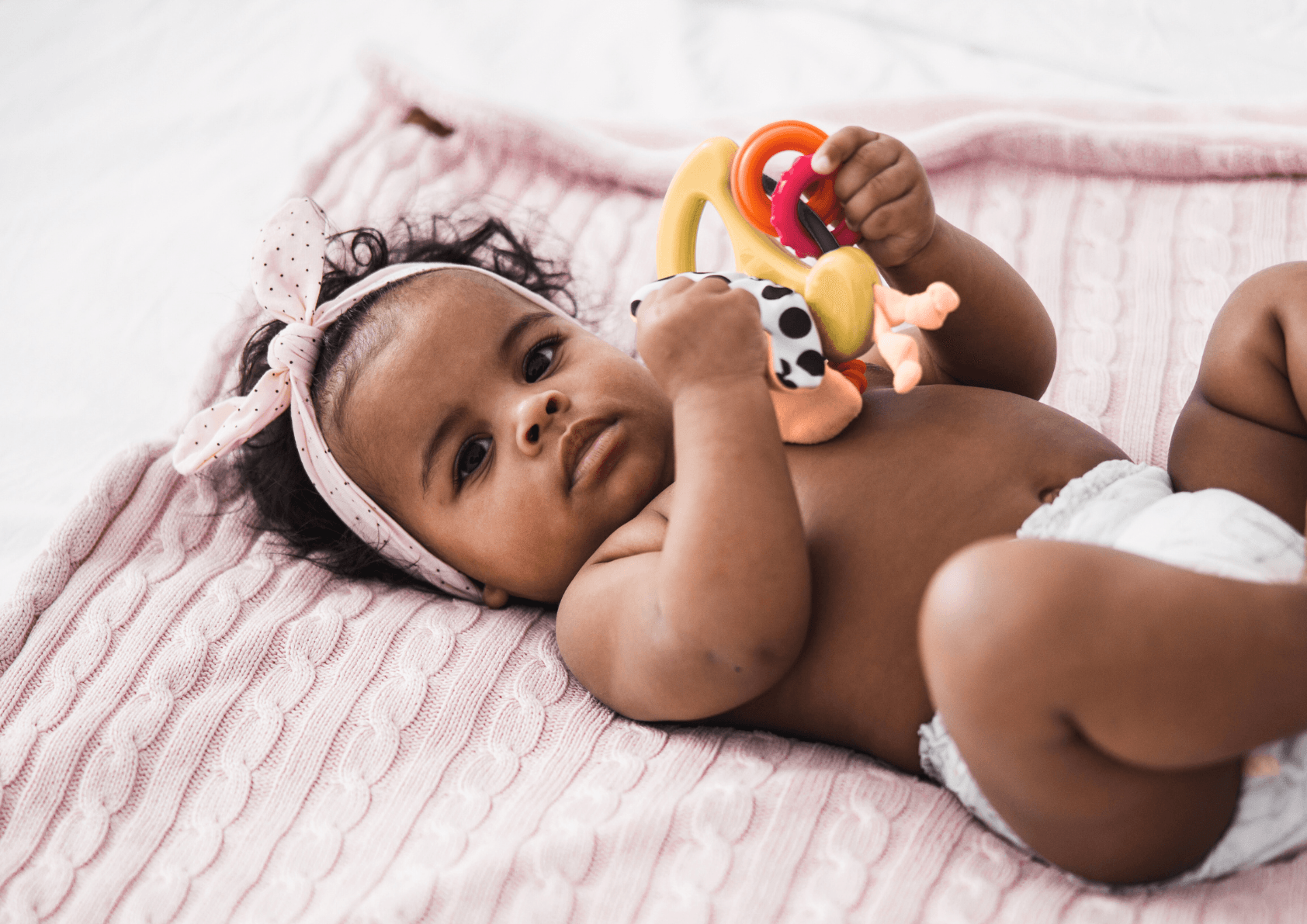
The first year of life is a period of incredibly rapid infant development. At five months, your baby is moving from being a relatively passive newborn to an increasingly active baby and engaged infant. Your baby is building upon the foundations laid in the earlier few months, with significant strides in their physical development, sensory perception, and social interaction.
Think of these baby's milestones not as a strict checklist, but as a general guide to the exciting things you can expect. The NHS website offers a wealth of information on your baby’s developmental stages. It is important to help your baby learn and reach important milestones through activities like reading and interactive play, as the time spent playing together builds not only love and security but also crucial social, language, and motor skills, while also recognizing that there is a varied timeline for reaching these development milestones, especially for those born prematurely.
Your Baby’s Health - Staying on Track
Regular health checks with your GP and health visitor are crucial during this period for your baby's health. Immunisations are a key part of protecting your baby’s health. According to the NHS immunisation schedule, your baby will likely have had their primary course of vaccinations by now, but it’s always wise to ensure you’re up to date.
During well-baby visits, head circumference is measured alongside height and weight by your child's doctor to monitor your baby's average growth and development.
Pay attention to signs of common illnesses. While it’s normal for babies to catch colds, be aware of any persistent symptoms or changes in behaviour that might concern you. The NHS offers guidance on spotting signs of serious illness in babies. Good hygiene practices, such as regular handwashing, remain paramount in keeping your baby healthy. Teething can also sometimes start around this age, leading to sore gums and fussiness; your health visitor can offer advice on managing this.
The Elusive Full Night's Sleep - Normal Baby Sleep at Five Months

Ah, baby sleep. Or perhaps, the lack thereof. By five months, some babies might be starting to sleep for longer stretches at night, but this is by no means universal. Sleep patterns can still be quite varied.
Your baby's sleep will typically need around 14-15 hours in a 24-hour period, including daytime naps or daytime sleep, though the NHS Children's Health guide suggests babies aged 4 to 12 months need around 12 to 16 hours. Many babies at this age may sleep for a longer stretch at night, but as the Newcastle Hospitals NHS Foundation Trust points out, it's normal for many babies to continue waking through the night for at least the first year.
Establishing a consistent bedtime routine can be incredibly helpful. This might include a warm bath, a story, and a quiet feed. Creating a calm and dark sleep environment is also key. If you have concerns about your baby’s sleep, resources such as The Lullaby Trust offer vital safe sleep advice, and your health visitor can also provide support.
Some parents explore gentle sleep training methods around this age, but it’s essential to choose an approach you are comfortable with and that suits your baby.
Nutrition and Your Baby’s Food Journey
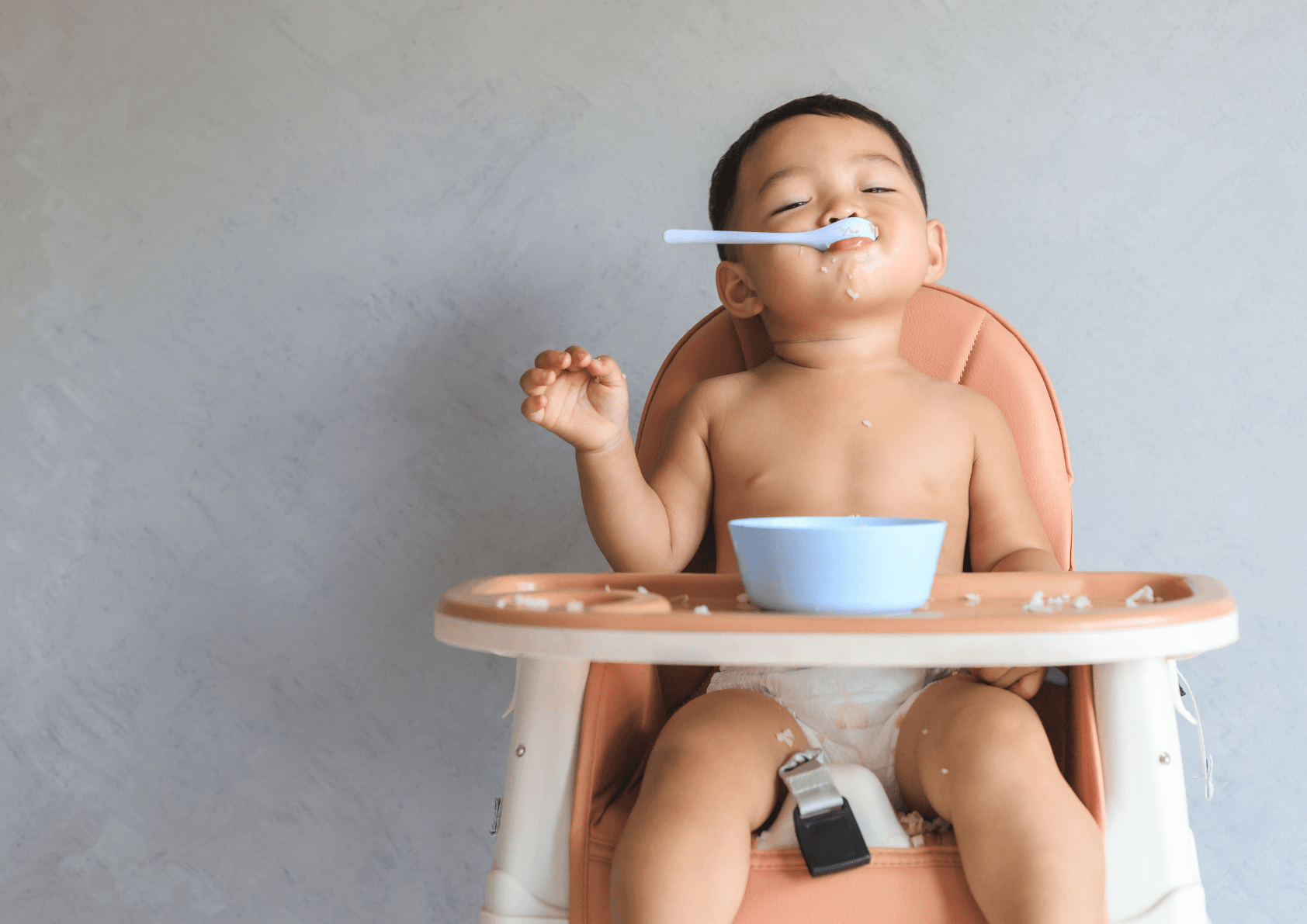
For the first six months of life, breast milk or infant formula provides all the nutrition your baby needs. However, around the six-month mark, you’ll likely be thinking about how to introduce solid foods. Some official guidance, like that from the NHS, advises that signs of readiness for solids typically appear around six months.
These signs include your baby being able to stay in a sitting position and hold their head steady, coordinating their eyes, hand and mouth so they can look at food, pick it up and put it in their baby's mouth, and swallowing food (rather than spitting it back out). NHSGGC also provides helpful information on starting solids.
While some parents may consider introducing solid foods slightly earlier, it’s crucial to discuss this with your health visitor. If your baby starts to introduce solid foods around five months, focus on smooth purees of vegetables and fruits for baby's food. The British Nutrition Foundation provides comprehensive information on infant nutrition.
Remember, these initial tastes are more about exploration than significant calorie intake, and always be mindful of any potential choking hazard by ensuring food is appropriately prepared.
Unpacking Baby Development - It's More Than Just Milestones
Your five-month-old baby is becoming a keen observer and an active participant in their world.
Physical Development
You’ll likely notice increased strength and coordination in your baby. Your baby may be able to roll from their baby tummy time position to their back (and perhaps even back again!) – a significant step in their rolling skills. When lying on their tummy (tummy time), your baby may push up on their arm muscles, lifting their head and chest.
Improved neck control is a key indicator that your baby may be ready to start transitioning to solid foods. Their grasp is becoming more intentional, and your baby will enjoy reaching for and holding safe toys. Be mindful of babyproofing your home as their mobility increases, especially around the changing table. Buckinghamshire Healthcare NHS Trust offers a guide to these gross and fine motor skills.
Sensory Development
Their vision has improved significantly; your baby can see further and distinguish between shades of colour, and may be fascinated by complex patterns or brightly colored pictures. Your baby will be fascinated by their reflection and will enjoy playing.
Babies learn about their environment through tactile experiences; parents can engage your baby's sense of touch by exploring different textures and materials. Their hearing is also well-developed, and your baby will turn towards different sounds and familiar voices.
Communication
While words are still some way off, your baby is an increasingly effective communicator. Expect more varied babbling, cooing, blowing raspberries, and squealing as your baby experiments with sounds. Your baby is also learning the rhythm of conversation, often pausing for you to “reply.”
Reading and talking to your baby regularly is hugely beneficial for their language development, as highlighted by organisations like BookTrust. Your baby will start to recognize familiar things and people. PregnancyBirthBaby.org.au also has a helpful page on 5-month-old cognitive development which touches on these areas.
Floor Play and Exploration at 5 Months Old
Reach and Grasp Development
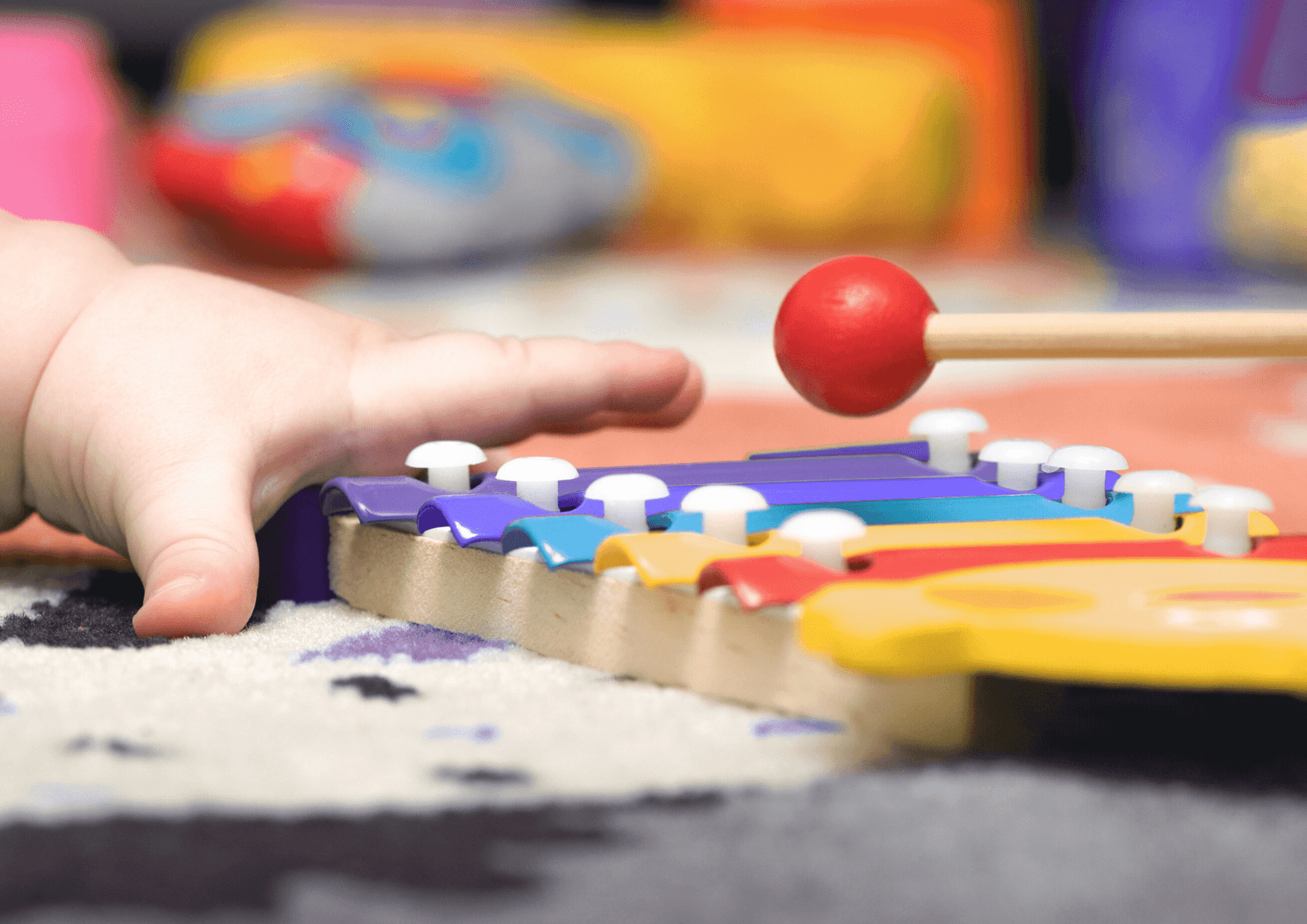
Reaching and grasping are essential milestones in your baby’s development, and most babies start to develop these skills around 5 months old.
To encourage reach and grasp development, try placing safe toys or small objects just out of your baby’s reach, encouraging them to stretch and grab. You can also try holding a toy above your baby’s head or to the side, helping them develop their hand eye coordination and tracking skills. As your baby becomes more confident in their abilities, they will start to reach for objects with more purpose, eventually mastering the skill of grasping and holding onto toys. This development is crucial for their fine motor skills and will help them progress to more complex patterns of movement.
Communication and Sounds
At 5 months old, your baby is beginning to develop their language skills, and communication is a vital part of this process. Your baby may start to make different sounds, like cooing, babbling, or even blowing raspberries, which are all important milestones in their language development.
To encourage communication, try responding to your baby’s sounds, having “conversations” with them, and introducing simple words and phrases. You can also try reading books with your baby, singing songs, or playing games like peek a boo, which can help them develop their understanding of language and facial expressions. As your baby becomes more confident in their communication skills, they will start to express emotions and needs more effectively, which is essential for their emotional security. Good eye contact is also part of this communication.
Bonding and Physical Touch

Physical touch is a vital part of bonding with your baby, and at 5 months old, your baby is becoming more aware of their surroundings and the people in their lives. Spending time with your baby, holding them, and giving them physical touch can help them develop a sense of emotional security and trust.
Activities for a 5 Month Old
Try activities like skin-to-skin contact, massage, or simply cuddling with your baby to promote bonding and physical touch.
As your baby grows and develops, they will begin to recognise familiar things and people, including their primary caregivers, which is essential for their child development. By prioritising bonding and physical touch, you can help your baby develop a strong foundation for their emotional and social development, which will benefit them throughout their life.
A Note on Baby Boys
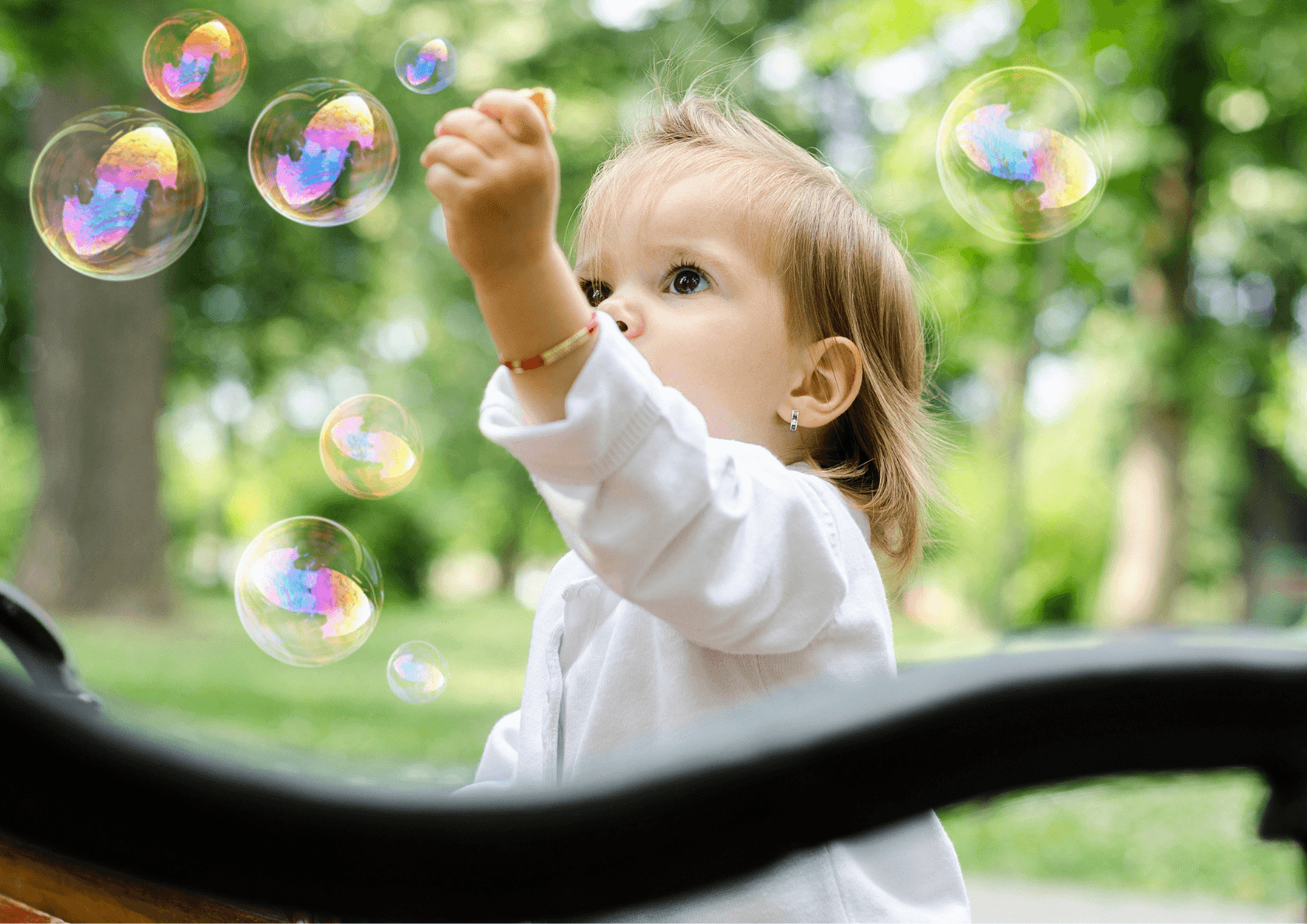
While developmental milestones are broadly similar for all babies at this age, some studies suggest minor variations in timings for certain gross motor skills between baby boys and girls, though these are generally not significant at five months.
The most important factor is providing a stimulating and nurturing environment for your individual baby. Focusing on their unique progress rather than comparisons is key.
Not all babies will reach milestones at the same pace, so it's important to consult your child's doctor or health visitor if you have concerns about your child's development.
Your Baby’s Emerging Personality
This is a delightful stage where your baby's unique personality truly begins to shine through. You'll start to see their preferences emerge – perhaps your baby has a favourite toy, baby likes a particular soothing song, or has specific facial expressions for different moods.
Your baby might be placid and observant, or a more active baby and vocal. Their social smiles will be more frequent and directed, and your baby will begin to show clear responses to different people and situations. Your baby is also developing a stronger sense of attachment to their primary caregivers.
Baby’s Milestones, Sleep, and the Question of Childcare
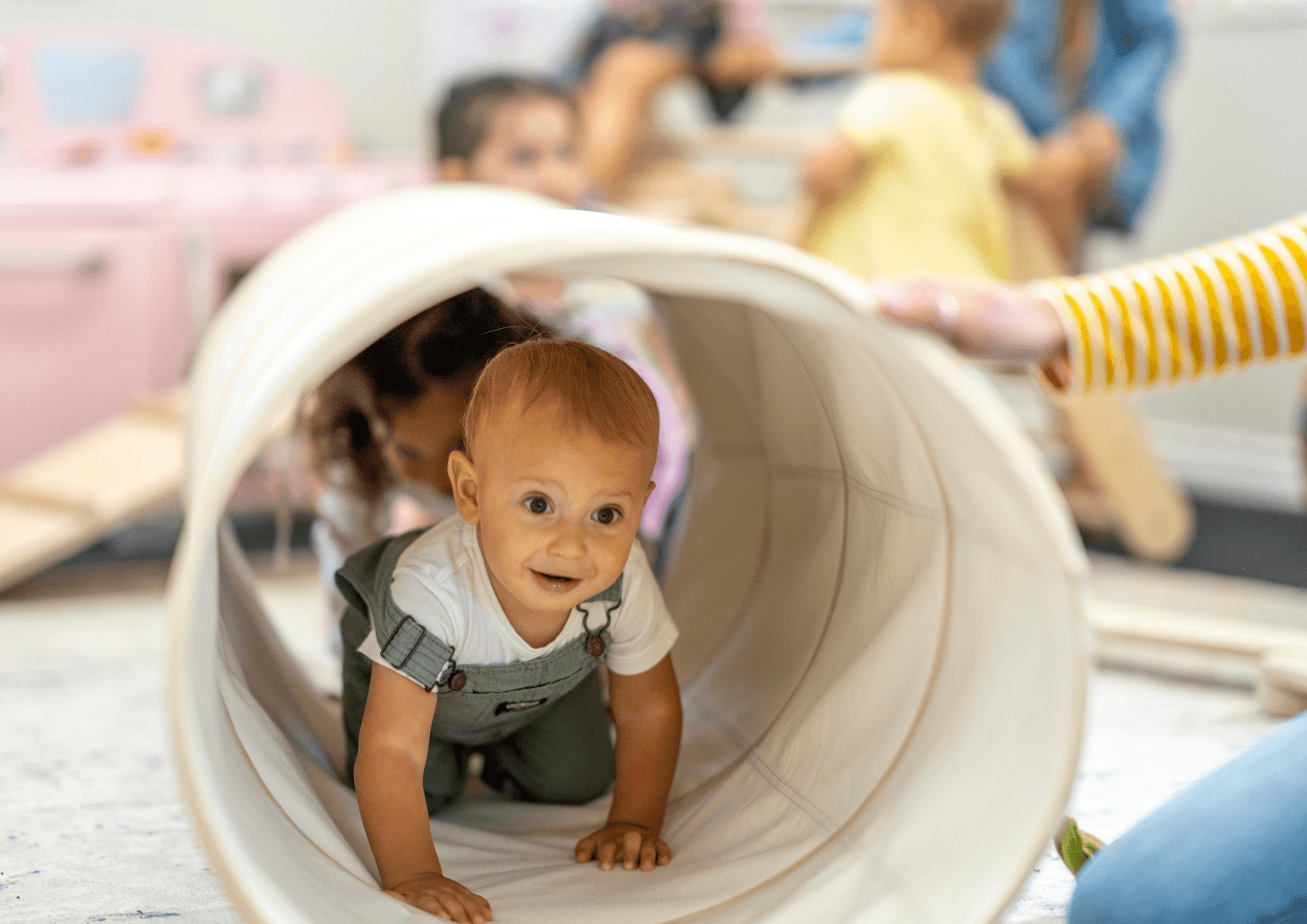
The five-month old mark often coincides with the end of parental leave for some, bringing the question of childcare to the forefront. Developmentally, a five-month-old baby is still very reliant on consistent, responsive care. While your baby is becoming more engaged with the world, their primary need is for secure attachment.
Is Nursery OK at 5 Month Old?
Is a five-month-old developmentally ready for a bustling nursery environment with many other children? For some, it can work, particularly with excellent staff-to-child ratios and a focus on individual care. However, many parents find that a childminder or a nanny can offer a more home-like, intimate setting, which can be particularly beneficial for a younger infant still developing their emotional regulation and attachment patterns. These options often allow for more one-on-one attention and adherence to your baby’s individual schedule.
If you are considering your childcare options, exploring services like JPoppet can help you find nannies or childminders who align with your family’s needs and philosophy, ensuring your baby receives nurturing care tailored to their developmental stage. Understanding the differences between nannies and childminders can also help you make an informed choice.
Ensuring a safe play environment is crucial at this stage, as your baby starts experimenting with objects, including putting them in their baby's mouth. Removing small objects that could pose a choking hazard is essential to prevent potential dangers.
It’s also worth noting that significant developmental leaps can sometimes temporarily disrupt baby sleep patterns. As your baby masters new skills like rolling or becomes more aware of their surroundings, their sleep might regress for a short period. Patience and consistency with routines are your best allies here.
Take Homes
Your five-month-old is on an incredible adventure of discovery, and you are their most important guide. By understanding their developmental progress, from their burgeoning physical skills to their emerging baby's personality, you can provide the support and encouragement your baby needs to thrive.
Celebrate each small achievement and remember that the love and connection you share are the most vital ingredients for their healthy development. Spend time with your baby and engage in activities that promote their development, as these moments are crucial for their growth and well-being. This is one of the most exciting things about being a parent.
The journey through your baby’s first year is a tapestry woven with countless small moments of growth and learning, crucial for understanding and supporting your baby's development. While baby's milestones provide a useful framework, it’s the day-to-day interactions – the cuddles, the babbling conversations, the shared explorations – that shape your child’s development most profoundly.
Trust your instincts, seek support when you need it, and above all, enjoy this precious and fleeting time. For more parenting tips and further reading, organisations like Family Lives and Unicef (which also offers valuable resources on early childhood development) can be very helpful.
Read More
NHS - Your baby's development month by month: An ongoing guide for parents to understand what to expect as their baby grows beyond five months.
NHS - Your baby's first solid foods: A comprehensive NHS guide, essential as babies around five months approach the age for starting solids.
The Lullaby Trust - Safer Sleep Advice: The leading UK charity providing crucial advice on safe sleep practices for babies.
NCT - Baby Development & Parenting: Offers a wealth of articles, support, and courses covering various aspects of baby development, play, and adjusting to parenthood.
BookTrust - Reading with your child (0-5 years): Provides excellent resources and tips for enjoying books with babies, supporting language development and bonding.

